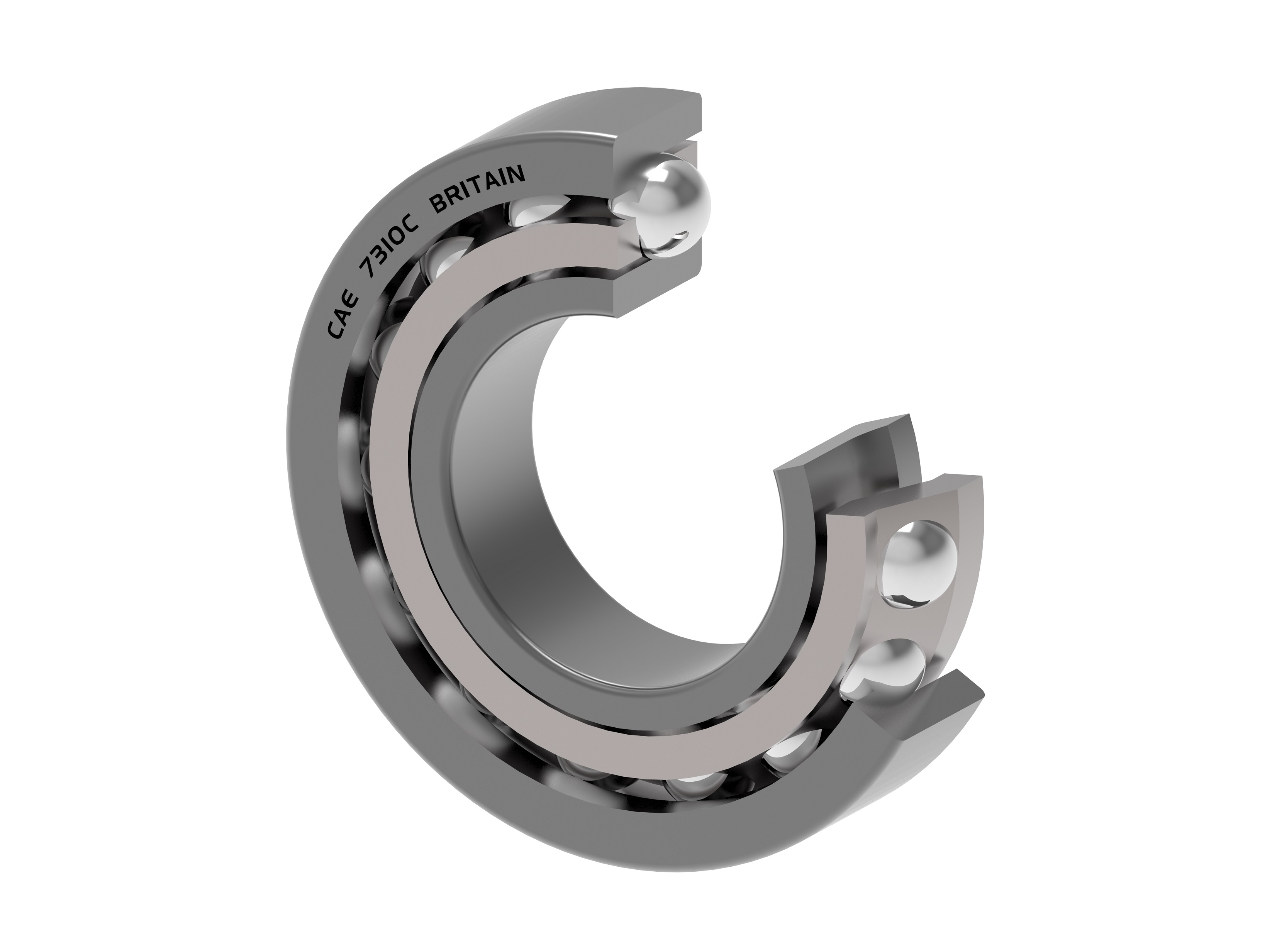
CAE Single row angular contact ball bearing is inseparable, rigid transverse bearing, with different shoulder sizes at the both sides of inner and outer rings. The shoulder with smaller shoulder will allow more steel balls into the bearing to enhance the carrying capacity.
Single row angular contact ball bearing is more suitable for bearing the axial and radial efforts, including combined load and capsizing moment, which is suitable for high speed operation. As these bearings can only bear the axial load in one direction, they have to match and install with each other so that each bearing can bear the axial load in each direction.
CAE single row angular contact ball bearing can provide standardized design in a large range ,that is, basic design and all-powerful matching design.
The rollaway nest and bearing width of single row angular contact ball bearing with basic design adopts commercial tolerance, which dose not allow direct pairing installation.
single row angular contact ball bearing for all-powerful match can adopt different suffixes according to special requirement, like DB, DF or DT. Due to this design, this type of bearing can be installed with any matching without any differences.
Matching installation
DB
Installing two bearings back to back has relatively high strength, which can also bear capsizing moment. At the moment of DB, the load lines of two bearings separate each other by the bearing axis. The bearing pack is able to afford axial load in two directions while each bearing can afford that in one direction.
DF
Installing two bearings face to face has relatively low strength, which is less sensitive than error of centration. At this moment, the load lines of two bearings collaborate with each other by the bearing axis. The bearing pack is able to afford axial load in two directions while each bearing can afford that in one direction.
DT
When single bearing has insufficient bearing capacity, tandem arrangement can be adopted. During this process, the load lines of two bearings are paralleled, with radial and axial loads shared averagely. However, bearing pack can only afford the axial load in one direction. If the axial loads in two directions shall be supported, one more bearing which is opposite the tandem bearing

